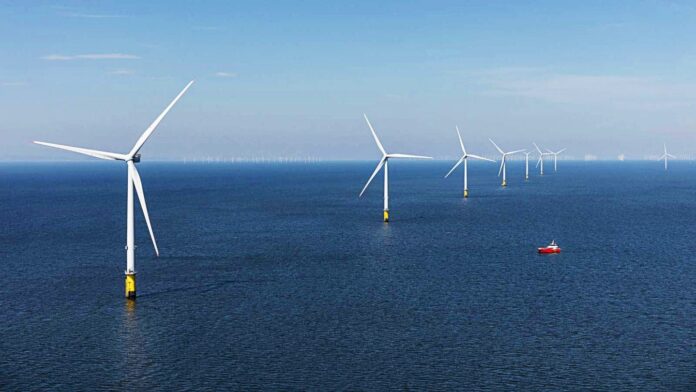The world’s largest offshore wind farm, Hornsea Two, off the Yorkshire coast in England, has its own LTE network, courtesy of system integrator Vilicom, part of BAI Communications since late last year, and also Vodafone, it turns out. The project, on schedule, has been in the works for two years, since Danish power company Ørsted, which managed the Hornsea Two site, appointed Vilicom to the task in mid-2020.
Hornsea Two became fully operational in August, overtaking Hornsea One as the largest offshore wind farm in the world. A private LTE network for Ørsted’s Hornsea One, also off the Yorkshire Coast, was supplied by Norwegian offshore communication network operator Tampnet, which holds spectrum for offshore cellular deployments at 700 MHz, 800 MHz, 900 MHz, 1.8 GHz and 2.6 GHz. The news of Vodafone’s involvement in Hornsea Two is newer.
It is unclear, from the press announcement, which spectrum is being used at Hornsea Two – whether it is Vodafone’s public spectrum, localised for private usage, or shared or privately-licensed spectrum, or some combination? An enquiry has gone to all parties. Vodafone has been engaged from the start, it turns out. “Vilicom and Vodafone teams worked closely for two years… in tandem with the construction of the wind farm,” the statement said.
The new network serves “hundreds of operational and maintenance staff… across the sail route and spanning the entire wind farm”. Vilicom will “power” the network as “critical comms infrastructure”, it said, for work tasks and for personal comms. It stated: “Ørsted… staff and all users and vessels… can now seamlessly enjoy the same Vodafone… network experience as… onshore.”
A temporary LTE solution was provided during the construction phase, as well, across a five-vessel fleet of floating offices. Vilicom, an indoor specialist, based in Dublin and Reading, has a major project with the Moray East offshore wind farm in Scotland, for a private network spanning an area of 295 square kilometres. It has also delivered private LTE for Dublin Airport Central using airtime from mobile operators Vodafone, Three, and Eir.
BAI is working with Transport for London to bring connectivity to the London Underground and has partnered with Sunderland City Council to build a new private 5G network with Mavenir open RAN across the city, including a 5G test lab in The University of Sunderland. Vilicom supplied temporary in-building wireless networks for the NHS field hospitals in Glasgow’s SEC and Birmingham’s NEC arenas, at the height of the UK response to the Covid-19 pandemic.
Sean Keating, chief executive at Vilicom, said: “The completion of this network is a huge achievement for Vilicom, Vodafone, and Ørsted teams. Not only have we overcome the unique set of challenges involved in deploying a mobile network in the middle of the North Sea, but we have also accomplished this feat of engineering during a pandemic, with difficult operational circumstances.”
Patrick Harnett, Vice President UK Programme, Ørsted said: “It is so important to have a 4G network that allows us to improve the efficiency of construction and operations of the world’s largest offshore wind farm. It’s also very important for our colleagues working out at sea to be able to connect back home to their friends and families. The wind farm will have the capacity to provide the UK with clean, green energy for 1.4 million homes.”
Nick Gliddon, business director at Vodafone UK, said: ”Building a complete mobile infrastructure on an offshore wind farm is a technical challenge, but I’m delighted we’re able to provide the connectivity that Ørsted’s Hornsea 2 needs to connect to the outside world and be efficiently managed. It is testament to the great collaboration between us and Vilicom… It’s brilliant to be involved in a project bringing new renewable power to the UK.”

